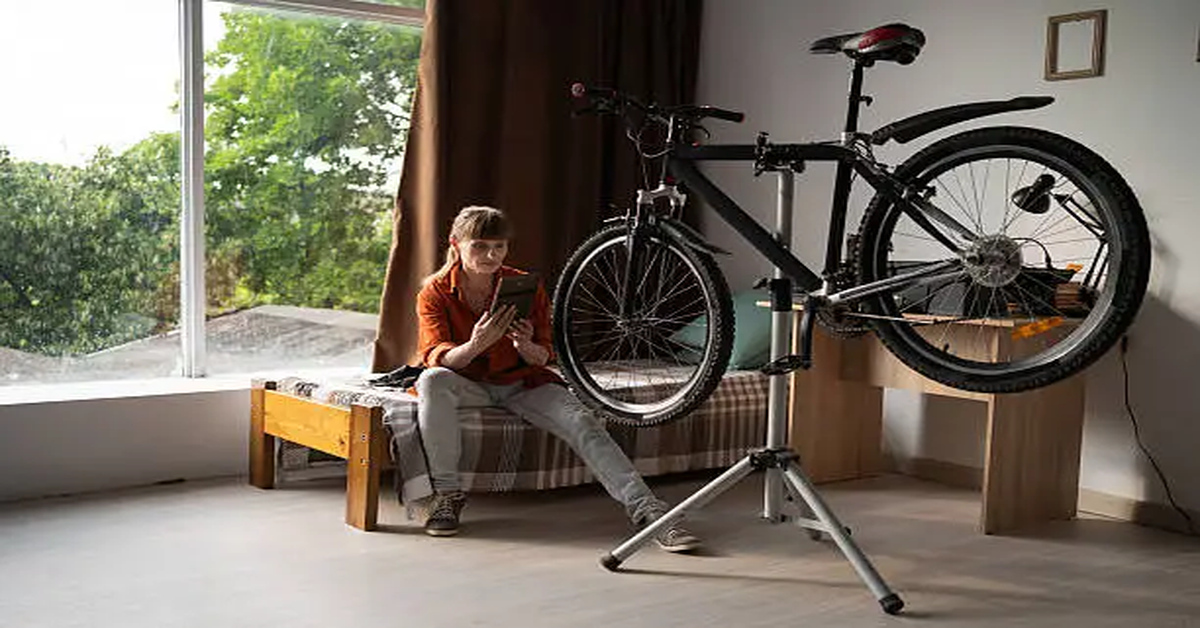
Storing Bicycle is one of the most rewarding activities for both recreation and transportation. Whether you ride occasionally for leisure, daily for commuting, or competitively for sport, your bicycle represents an investment of both money and passion. To protect that investment and ensure your bike remains in top condition, proper storage is absolutely essential. Storing a bicycle is not simply about finding a place to park it—it is about keeping it safe from weather, theft, wear, and damage while making it easily accessible for your next ride.
In this detailed article, we will cover everything you need to know about storing bicycles. From indoor storage solutions and outdoor protective strategies to seasonal considerations and maintenance practices, this guide will help you create the best storage system for your lifestyle and space.
Importance of Proper Bicycle Storage
A bicycle, like any machine, is sensitive to environmental factors. Exposure to moisture, dirt, sunlight, and extreme temperatures can lead to rust, fading, and damage. Leaving your bike lying on the ground or leaned haphazardly against walls increases the risk of frame scratches, bent wheels, and drivetrain wear.
Proper storage addresses the following key concerns:
- Protection from Elements: Rain, snow, and UV rays degrade paint, tires, and metal components.
- Safety and Theft Prevention: Locking mechanisms and secure placement reduce risk of theft.
- Space Efficiency: Correct storage keeps homes and garages organized, avoiding clutter.
- Longevity of Parts: Maintaining proper weight distribution prevents warping of wheels and strain on suspension.
- Convenience: Easy-to-access storage encourages regular use of the bike.
When you store a bicycle correctly, you are not only preserving its function but also ensuring each ride begins smoothly without unnecessary repairs.
Indoor Bicycle Storage
Indoor storage is the safest option for most riders because it keeps bikes away from weather and theft. However, not everyone has a dedicated garage or large home space, so creative solutions are often needed.
Wall Mount Racks
Wall-mounted racks are popular because they lift the bike off the floor, saving space and keeping it secure. They come in two primary styles: horizontal and vertical.
- Horizontal racks hold the bike parallel to the wall, often doubling as decorative displays in apartments.
- Vertical racks hold the bike upright, using less wall width but requiring more height clearance.
Ceiling Hoists
Ceiling-mounted hoists use pulleys to lift the bike up, freeing floor space completely. These are excellent for garages and basements where headroom is sufficient.
Free-Standing Racks
For renters who cannot drill into walls, free-standing racks are ideal. These units rely on floor-to-ceiling tension or wide bases to hold one or multiple bikes.
Furniture Integration
Some modern designs integrate storage into furniture, such as coffee tables or shelves with built-in bike holders. This option blends cycling with interior décor.
Outdoor Bicycle Storage
Sometimes, indoor space is not available or practical. Outdoor storage requires careful planning to protect bikes from harsh conditions.
Bicycle Sheds
Dedicated bicycle sheds provide a secure, weatherproof enclosure. Made from wood, plastic, or metal, these sheds keep multiple bikes safe and organized.
Weatherproof Covers
High-quality covers shield bikes from rain and sun when sheds or garages are not available. They should be durable, waterproof, and UV-resistant.
Ground Anchors and Locking Systems
For theft-prone areas, ground anchors embedded in concrete provide strong locking points. Combining them with heavy-duty U-locks or chains ensures maximum security.
Balcony and Garden Storage
Riders in apartments sometimes use balconies for bike storage. In such cases, covers and compact stands are recommended to keep bikes stable and protected.
Seasonal Bicycle Storage
For riders who cycle seasonally, long-term storage requires extra steps.
- Winter Storage: Clean and lubricate the drivetrain before storing indoors. Slightly inflate tires to prevent flat spots. Keep away from freezing temperatures to avoid damage to hydraulic brakes and carbon components.
- Summer Storage: Protect against UV rays by using covers or indoor placement. Check for tire expansion in hot conditions.
- Off-Season Prep: Remove batteries from e-bikes and store them separately at room temperature. For long-term storage, loosen suspension or quick-release levers to reduce stress on parts.
Best Practices for Storing Different Types of Bicycles
Different bicycles have unique storage needs depending on their design and use.
| Bicycle Type | Storage Recommendation | Special Considerations |
|---|---|---|
| Road Bike | Indoor vertical or horizontal rack | Lightweight frames scratch easily, handle gently |
| Mountain Bike | Wall or ceiling storage, easy-access for frequent rides | Mud clearance needed before storing |
| Hybrid Bike | Outdoor shed or free-standing rack | Multi-use bikes often stored for daily commuting |
| Folding Bike | Compact indoor storage, under furniture or closet | Folded regularly, keep hinges lubricated |
| Electric Bike | Indoors with battery removed | Battery must not be exposed to temperature swings |
Security Considerations for Bicycle Storage
No storage solution is complete without attention to security. Bicycles are prime targets for theft, and thieves adapt quickly to weak locking methods.
Lock Types
- U-Locks: Offer strong resistance to bolt cutters when properly sized.
- Chain Locks: Flexible but require hardened steel to resist cutting.
- Folding Locks: Compact and versatile, though less strong than U-locks.
Best Practices
- Always lock the frame and at least one wheel.
- Use two locks of different styles to deter thieves.
- In outdoor sheds, anchor locks to immovable structures.
- Register bikes with local or national bike registries for recovery assistance.
Maintenance Before Storing
To maximize longevity, prepare the bike properly before storage:
- Clean Thoroughly: Remove mud, salt, and grime to prevent rust.
- Lubricate Drivetrain: Apply oil to chain, derailleurs, and gears.
- Check Tires: Inflate moderately; avoid storing completely flat.
- Inspect Brakes: Ensure no cables are under unnecessary tension.
- Cover: Even indoors, a dust cover keeps bikes clean and ready.
Space-Saving Tips for Apartments
Urban living often means limited space. Cyclists in apartments need solutions that balance functionality and design.
- Use vertical wall racks behind doors or in hallways.
- Consider folding wall mounts that collapse when not in use.
- Store bikes on balconies with weather covers if allowed by building rules.
- Combine bike storage with furniture, such as bookshelf racks or desk stands.
Comparing Storage Solutions
| Storage Method | Cost Range | Best For | Protection Level |
|---|---|---|---|
| Wall Rack | Moderate | Apartments, small homes | Medium |
| Ceiling Hoist | Moderate | Garages, basements | High |
| Free-Standing Rack | Low–High | Renters, flexible arrangements | Medium |
| Outdoor Shed | High | Families with multiple bikes | Very High |
| Weather Cover | Low | Temporary outdoor storage | Low–Medium |
| Furniture Storage | High | Stylish apartment integration | Medium |
Mistakes to Avoid When Storing Bicycles
- Leaning Against Walls: Causes scratches, tipping hazards, and bent components.
- Storing with Flat Tires: Leads to sidewall cracking and flat spots.
- Exposure to Direct Sunlight: Fades paint and weakens rubber.
- Improper Locking: Leaving only a wheel locked invites theft.
- Neglecting Cleaning: Dirt left on the bike accelerates corrosion.
Environmental Considerations
Sustainable storage solutions are becoming popular among eco-conscious riders. Wooden racks from reclaimed timber, solar-powered storage sheds, and community bike lockers reduce environmental impact while providing functionality. Urban planners are also recognizing the value of public bicycle storage facilities to encourage cycling as green transportation.
The Future of Bicycle Storage
Looking forward, bicycle storage is evolving with technology. Innovations include:
- Smart Locks: Connected to apps with GPS tracking.
- Automated Bike Garages: Compact mechanical systems that store bikes underground or in towers.
- Integrated Charging Stations: For e-bikes, combining storage with power supply.
- IoT Monitoring: Sensors to monitor temperature, humidity, and bike condition in real time.
These advancements promise to make bicycle storage safer, smarter, and more convenient for urban populations.
Conclusion
Storing a bicycle properly is one of the most important responsibilities of every rider. Whether indoors or outdoors, temporary or long-term, the method you choose should protect your bike from environmental harm, theft, and unnecessary wear. From wall mounts in compact apartments to weatherproof sheds for multiple family bikes, there are solutions for every lifestyle and budget. By combining good storage practices with regular maintenance, your bicycle will remain reliable, attractive, and ready for every adventure.
FAQs
1. What is the best way to store a bike indoors?
Wall-mounted racks or ceiling hoists are excellent for saving space and keeping bikes protected indoors.
2. Can bicycles be stored outside year-round?
Yes, but only with weatherproof covers or sheds, plus strong locks for theft prevention. Otherwise, indoor storage is safer.
3. How should I prepare a bicycle for winter storage?
Clean thoroughly, lubricate moving parts, inflate tires, and store in a dry indoor location away from freezing temperatures.
4. Is it okay to hang a bicycle by its wheels?
Yes, modern wheels can handle it, but ensure hooks are padded to avoid scratches and rims are not under constant strain.
5. What’s the best option for storing multiple bikes?
Outdoor sheds, free-standing multi-bike racks, or ceiling hoist systems are best for storing several bikes together securely.






